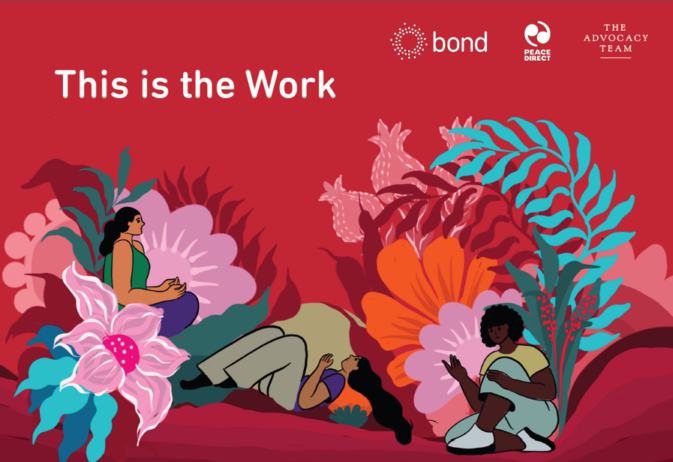The strengths and hurdles of locally led partnerships
‘Localisation’ and ‘locally led’ are buzzwords in the humanitarian and development sectors, and widely considered as best practice.
There is general consensus that decision-making around aid should occur within the communities being supported, with responses designed by these communities and managed by local actors, often in partnership with INGOs. But various obstacle can make the reality quite different from the theory.
Partnering with local actors that have deep roots in communities is a promising approach to delivering aid that is culturally relevant, contextually appropriate and impactful. Local partners bring invaluable insights into a community’s culture and needs and have specialized knowledge of local co-ordination structures and challenges.
The benefits of locally led approaches is demonstrated by the partnership between World Jewish Relief, a London-based INGO that works exclusively with local civil society organisations, and the Community Self-Reliance Centre (CSRC), a Nepali civil society organisation originating in Sindhupalchowk with three decades of experience in agrarian reform and land rights.
Partnering with local actors who have deep roots within the affected communities is a promising approach to delivering aid that is culturally relevant, contextually appropriate, and impactful. This collaboration leverages two critical sets of knowledge; local partners bring invaluable insights into the community’s culture, needs, and in-country coordination structures, along with specialized knowledge of specific local challenges.
CSRC provides essential expertise in advocating for the land rights of farmers and tillers in Nepal. When this local expertise is combined with World Jewish Relief’s technical capacities—developed from working across various contexts and partnerships in areas like climate resilience, gender and monitoring and evaluation—an integrated and comprehensive approach to programme design emerges. This form of capacity sharing, where local actors contribute their understanding of local culture, context and needs, and INGOs contribute their international perspectives, creates a powerful synergy. As such, it is one of the most promising aspects of such partnerships.
How INGOs can meet the challenges of localisation
World Jewish Relief often grapples with defining its role in an increasingly locally led sector. This challenge is particularly evident when local actors are well established, possess a significant operational footprint, and have high capacity and technical expertise. In such cases, what can organisations like World Jewish Relief offer beyond financial support?
One way World Jewish Relief adds value is to take on the role of a convener. Given their extensive connections to international communities of practice, networks and conferences, INGOs can facilitate connections and help provide entry points for local partners at such events. This approach helps bring grassroots perspectives to the forefront and further highlights the broader work being done. After a World Jewish Relief staff member attended Care International’s Climate Resilience Academy, for instance, CSRC’s Jagat Deuja spoke at the alumni event. This emphasised the intersection of land rights and climate change in Nepal and showcased the joint initiatives that CSRC and World Jewish Relief are working on to promote resilience.
Another way INGOs can bring value to local actors is by routinely investing in their core costs. These expenses, such as office rent and furnishings, policy reviews, equipment, website updates, fees for specialised training courses or hiring local consultants, are crucial costs for organisational growth and development. By setting aside funding each year specifically for these types of expenses, which might be considered non-essential on a stretched project budget, INGOs can significantly add value to local partners and invest in their organisational sustainability. This approach ensures that local partners have the resources they need to grow and develop. Ultimately, this will strengthen the overall partnership and improve the effectiveness of any joint initiative.
The pitfall of misaligned priorities
Another pitfall that can occur when INGOs partner with local actors is a misalignment of priorities. When this happens there are fewer opportunities for collaboration, and in some cases the local partner may feel forced to sacrifice its core mission. Some grants accessible to INGOs may be earmarked for specific activities that local actors do not see as the most impactful or urgent needs of their communities. This creates tension between the rightful push for locally led decision making and the ambition to secure funding and initiate new projects.
The imbalance in donor-recipient power relations means there is a high risk that local partners may feel pressured to alter their identity and focus areas to maintain or chase new funding relationships. An example of misaligned priorities can be seen in the push for cutting carbon emissions and reducing project’s environmental impact. The UK government requires INGOs to measure and reduce carbon emissions, but this may not be a priority for local actors or their governments. Without clear guidance on the extent that partner emissions are the responsibility of UK-based donors, and how they can better support local actors in a way that resonates for them, navigating this priority becomes challenging.
While the partnership approach in the humanitarian and development sectors holds significant opportunity, organisations must navigate the complex dynamics of differing visions and priorities to make them work.
By focusing on capacity sharing, acting as conveners to amplify local voices, and investing in the long-term sustainability of local partners, INGOs can add substantial value beyond financial support. Quality partnership requires continuous effort and trust, and a commitment to aligning goals and practices with the genuine needs and aspirations of the communities they serve.
Category
News & Views



